Top 10 Best Ghee Substitutes 2023
You should find a ghee substitute if you are bored with using ghee in everyday dishes. Ghee has a high-fat content and is expensive, so a better and cheaper ingredient would be a reasonable alternative to ghee.
Many other options will give better results than ghee. The list of ghee alternatives I am about to provide is easy to find and highly effective for your dish. They are also perfect choices for your health.
Trust me! All substitutes are helpful for you, so you should not miss any fantastic alternatives to diversify your cooking ingredients. Keep scrolling to find out every tremendous alternative.
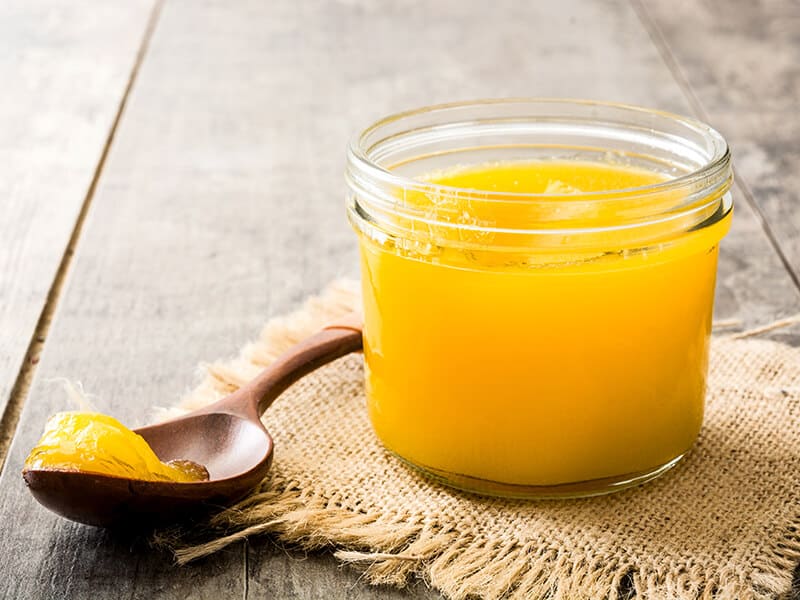
Explore The List Of 10 Fantastic Alternatives For Ghee
Ghee is an ingredient commonly used in Indian cuisine. If you cannot find ghee in the kitchen, you can choose one of the following 10 substitutes to avoid interrupting your cooking. I hope you will be satisfied with the information I provide.
- Sesame Oil
- Sunflower Oil
- Soybean Oil
- Canola Oil
- Coconut Oil
- Olive Oil
- Rapeseed Oil
- Vegetable Oil
- Butter
- Clarified butter
| Substitutes for ghee | Proportions |
| Sesame Oil | 3 parts sesame oil = 4 parts ghee |
| Sunflower Oil | 1 part sunflower oil = 1 part ghee or 3 parts of sunflower oil = 4 parts of ghee |
| Soybean Oil | 3 parts soybean oil = 4 parts ghee |
| Canola Oil | 1 part canola oil = 1 part ghee, or 3 parts of canola oil = 4 parts of ghee |
| Coconut oil | 1 part coconut oil = 1 part ghee |
| Olive Oil | 3 parts olive oil = 4 parts ghee |
| Rapeseed Oil | 3 parts rapeseed oil = 4 parts ghee |
| Vegetable Oil | 1 part vegetable oil = 1 part ghee |
| Butter | 1 part butter = 1 part ghee |
| Clarified butter | 1 part clarified butter = 1 part ghee |
Expand Your Knowledge With Some Incredible Knowledge About Ghee
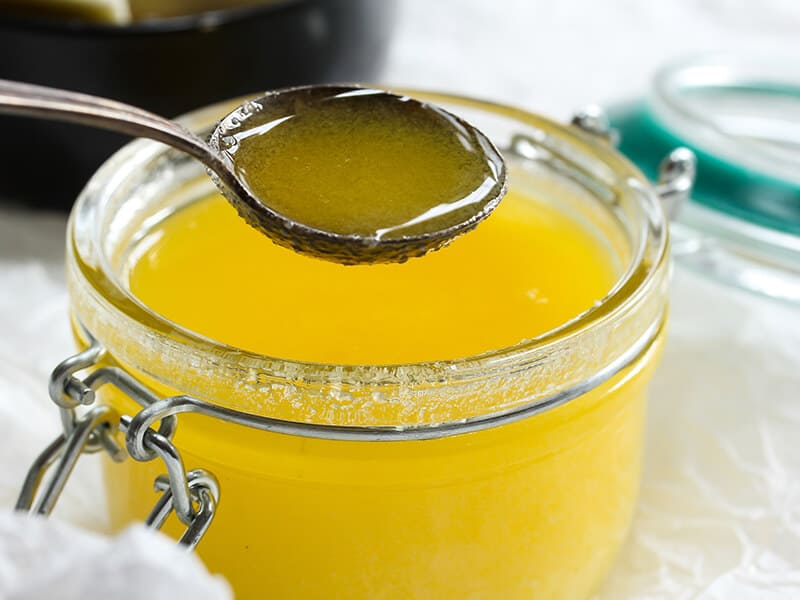
Before looking into substitutes for ghee, you and I will explore helpful information about ghee together. I hope that after reading this section, you will have background knowledge about the fantastic ingredient.
1. Take A Closer Look To These Primary Information About Ghee
Ghee is a kind of clarified butter. After heating the butter slowly to remove the water and milk solids, the product you get is ghee. The milk solids will gradually turn brown during the cooking process. You can feel the lightly caramelized flavor of ghee.
The flavor of ghee is similar to butter, but ghee’s flavor is not smoother than butter because of all the water elimination. However, ghee will bring out a fresh feeling for you. Ghee has a special half-grain and half-cream texture so that it will create unique flavors for the dish.
The quality of butter and milk plays a key role in creating the taste, texture, and color of ghee. The boiling time is also an essential factor that directly affects the quality, taste, and texture of ghee.
Ghee is a popular Indian cooking ingredient. In addition, you can also find ghee in the Middle East as well as Southeast Asian cuisine. Thanks to its unique properties, ghee will be a great choice for dishes.
2. How To Use Ghee In Cooking To Get A High Result?
Ghee is an ingredient that you can easily find in many dishes. Ghee is preferred for those who like to eat fat, thanks to its high-fat content. It also adds flavor to your daily dishes.
Ghee will pair well in roasted, fried, and saute dishes. The appearance of ghee will add fat and flavor to the dishes. Toasted vegetables will become more attractive with ghee. Alternatively, you can use ghee in making omelets or combine with coffee.
Discover 3 effective methods to use ghee to take advantage of its flavor in cooking.
Bring These Ghee Substitutes To Your Kitchen Right Away
Although ghee can have remarkable effects on your dishes, there are a number of factors that make you hesitate about using it. You need to find a substitute to suit your purposes. Now, how about boosting your cooking ingredients with the list of 10 ghee substitutes?
1. Sesame Oil Will Be A Perfect Replacement For Ghee
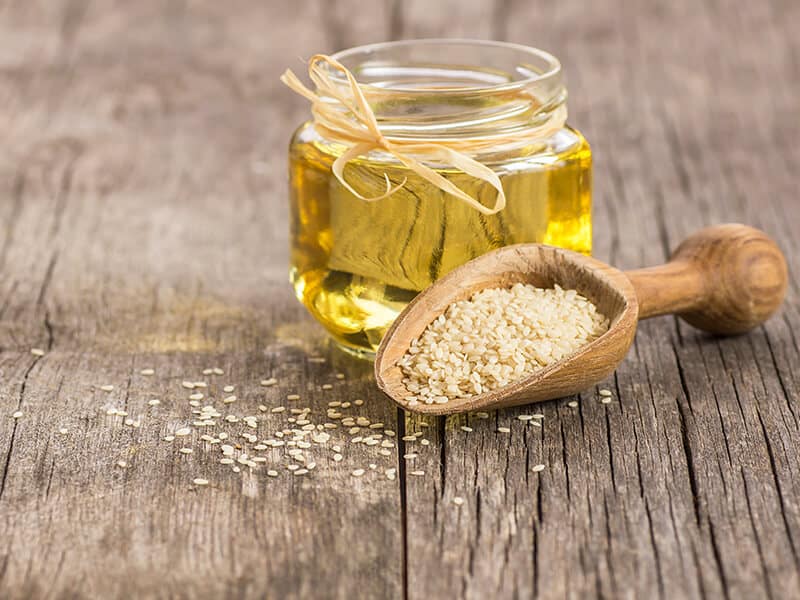
If you do not like the fatty taste of ghee, you can use sesame oil as a fantastic substitute for ghee. Although finding ghee is not so easy, the flavor of sesame oil would be a reasonable alternative for ghee.
Moreover, compared to ghee, sesame oil is better for your health. Sesame oil will bring a wonderful aroma to the dish. You should use toasted sesame oil because it will bring out the natural flavor for you.
If you want to use sesame oil to replace ghee, you should use a ratio of 3:4. Using sesame oil as an alternative for ghee in cooking will not be as perfect as adding it to salads, noodles, and sauces. It will be good for your heart health.
2. Let Sunflower Oil Bring Novelty To Your Dishes
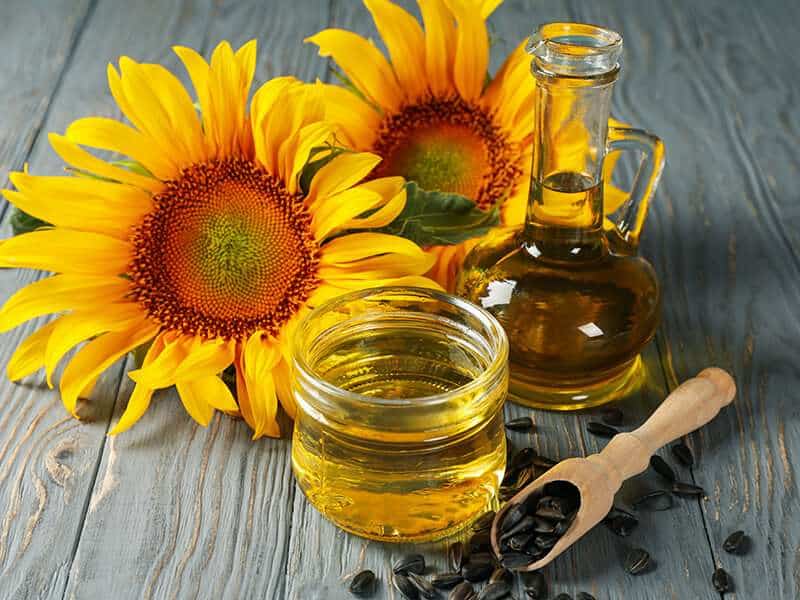
An alternative that is both cheap and easy to use is sunflower oil. Sunflower oil has an attractive aroma, so you do not need to use other spices to create the scent. You can use sunflower oil instead of ghee in deep-fried dishes due to its high smoking point.
Besides using sunflower oil as cooking oil, you can add sunflower oil to salad dressings along with vinegar. Sunflower oil has a nutty flavor so that it will give the dish a ghee-like flavor. You should use a 1:1 replacement ratio for the best effect.
To replace ghee in a ratio 1:1, you have to reduce the ingredient that contains a lot of moisture. Another option is to use 3 parts of sunflower oil to substitute 4 parts of ghee.
3. Add Protein To Your Body With Soybean Oil
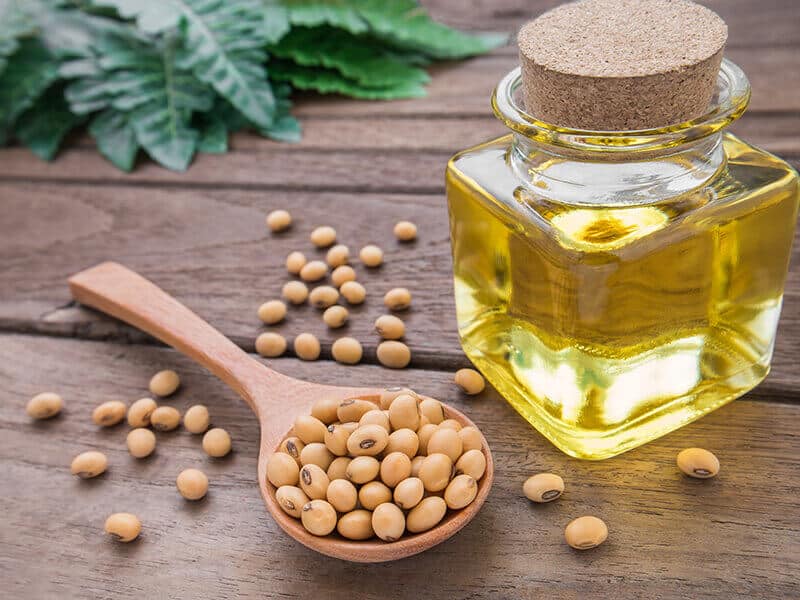
Soybean oil is an excellent source of protein for your body. Furthermore, soybean is also a healthy substitute for ghee. Soybean oil has a mild flavor, so you should add a little other seasonings to enhance the flavor of the dish.
There are many ways to incorporate soybean oil in cooking, but it is good to use it in desserts and pastries. Soybean oil will bring moisture to the dish. Since soybean oil is quite easily overcooked, you should not use it as cooking oil.
For best results, you should replace ghee in a 3:4 ratio. Despite its health benefits, soybean oil should be consumed in moderation. The high polyunsaturated fat contents of soybean oil will be harmful to your health.
4. Canola Oil Is A Wonderful Alternative To Ghee
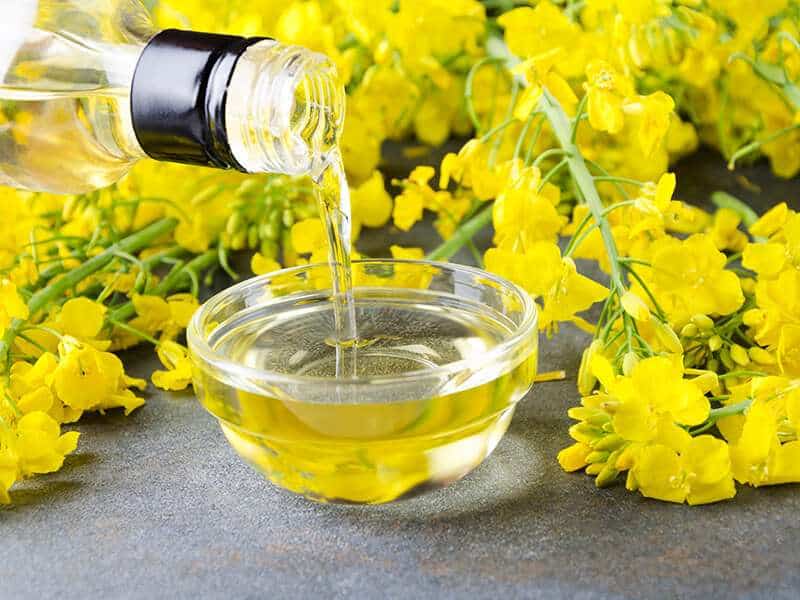
Canola oil is low in erucic acid and saturated fat, so it is good for your health. Canola oil will work best in fried dishes. In addition, brushing a layer of canola oil on the surface of meat and vegetables when grilling also brings delicious results. It is also good for baked goods.
A 3:4 ratio is reasonable to use canola oil in place of ghee. If you want your dish to be drier, you can reduce it to 1:1. Since canola oil does not have an intense flavor, it is rarely used in Indian dishes that require a strong taste.
5. What Do You Think About Choosing Coconut Oil To Substitute For Ghee?
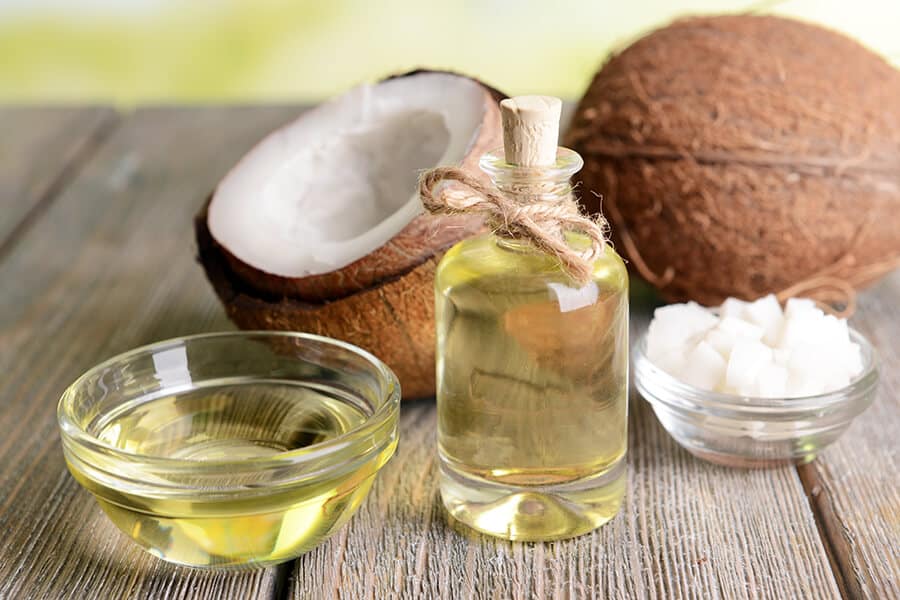
Coconut is an essential ingredient in cooking. Coconut oil also brings impressive effects to dishes, so using coconut oil as a substitute for ghee is a wise decision. Using coconut oil will help you better protect your health.
Although the taste of coconut oil is not entirely the same as ghee, it is still a perfect alternative when combined with other ingredients. The nutty flavor of coconut oil will blend with other ingredients and bring unexpected effects.
Since coconut oil is pretty thick, you should use 1 part coconut instead of 1 part ghee, and keep all other elements of the recipe. Using coconut oil for desserts will bring a wonderful scent and taste.
6. Olive Oil Is A Good Choice For Your Health
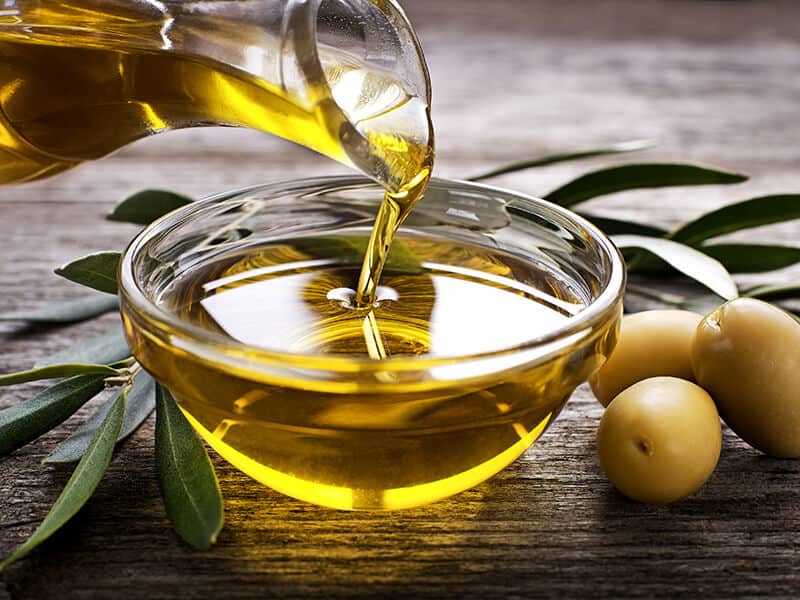
Although olive oil is quite expensive, it offers fantastic benefits for your health. So olive oil is used widely and becomes a perfect substitute for ghee. Thanks to the nutty taste, olive oil will help enhance the flavor of your dishes.
Olive oil is especially good at supporting anti-inflammation and preventing heart-related diseases and strokes. A little olive oil in salad dressings will enhance the flavor of salads, or you can use it for frying or stirring.
Using olive oil to bake cookies also gives great results. Using olive oil when you want a neutral flavor ingredient. Replacing in a ratio of 3:4 will bring high results. You should use olive oil if you do not care about its low-heat cooking.
Listen to some wonderful health benefits of olive oil to know about the values of olive oil in your life.
7. Rapeseed Oil Is An Incredible Replacement For Ghee
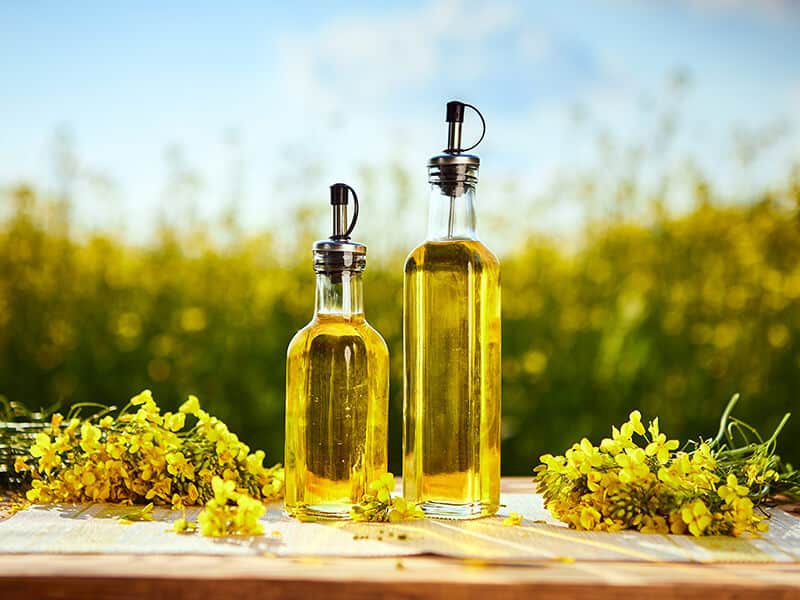
Rapeseed oil pairs well in many dishes and is a perfect substitute for ghee. Rapeseed oil will improve the function and health of your eyes, thanks to its vitamin E content. However, because of the high erucic acid content, you should not use too much rapeseed oil.
Rapeseed oil will leave a nutty aftertaste. You can use it instead of ghee if you do not like ghee’s nutty taste as the overall flavor of rapeseed oil is pretty mild. Adding a little rapeseed to soups, stew, and stir-fried will make you love their flavor more.
If you want to substitute for ghee, you need to use 3 parts rapeseed oil to replace 4 parts ghee.
8. Protect Your Health With Vegetable Oil
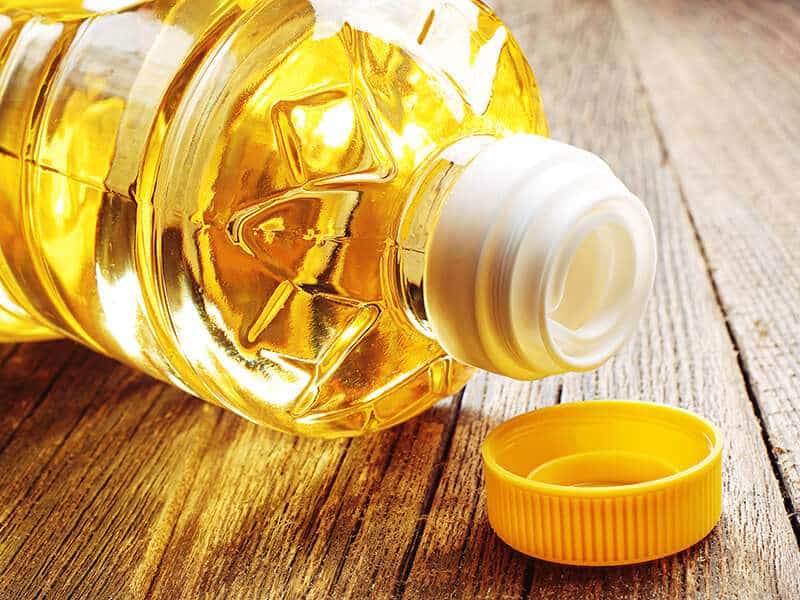
Today, vegetable oils are being used to protect health. You should choose vegetable oil to replace ghee because it will help you create new features for the dish and help improve health. Vegetable oils are usually made from peanuts, avocado, and safflower.
You can easily find vegetable oils in stores, and they are not too expensive. Vegetable oil is made from different nuts, beans, and fruits, so it has a pretty balanced taste. Vegetable oil is often used for frying and sauteing.
You can also substitute ghee in savory dishes. Vegetable oil will add moisture to the dish. Using 1 part vegetable oil to substitute 1 part of ghee is the most widely used method.
9. Butter Is An Ingredient That You Cannot Ignore
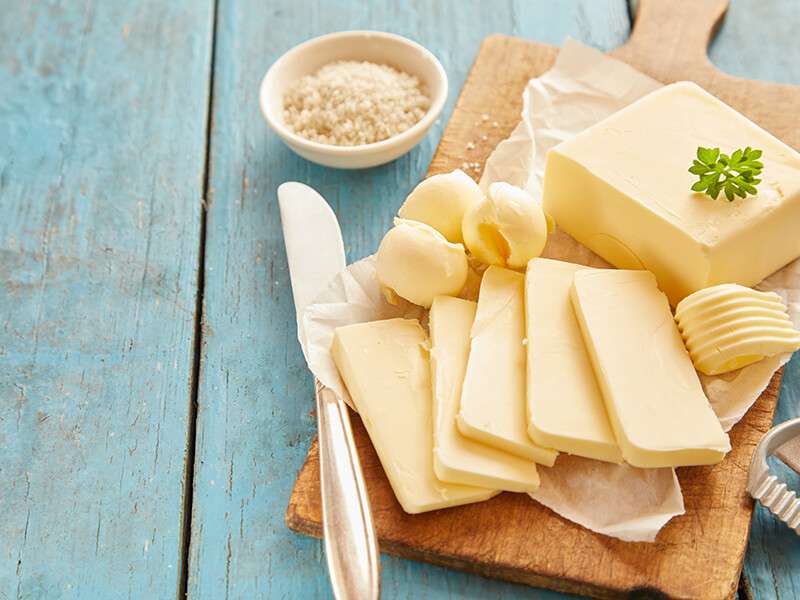
One ingredient that I cannot ignore as a substitute for ghee is butter. Butter has the similar texture as ghee, but its taste is different with sweetness and neutral taste. It cannot bring out the nutty taste like ghee. You can combine it with other ingredients to create a nutty flavor.
You can use butter in many different ways. Combine butter with bread for breakfast, add butter to baked or savory dishes. In addition, the price of butter is pretty cheap. Let’s replace ghee with butter in the ratio 1:1 without changing other ingredients.
10. Clarified Butter Will Enhance The Quality Of Dishes
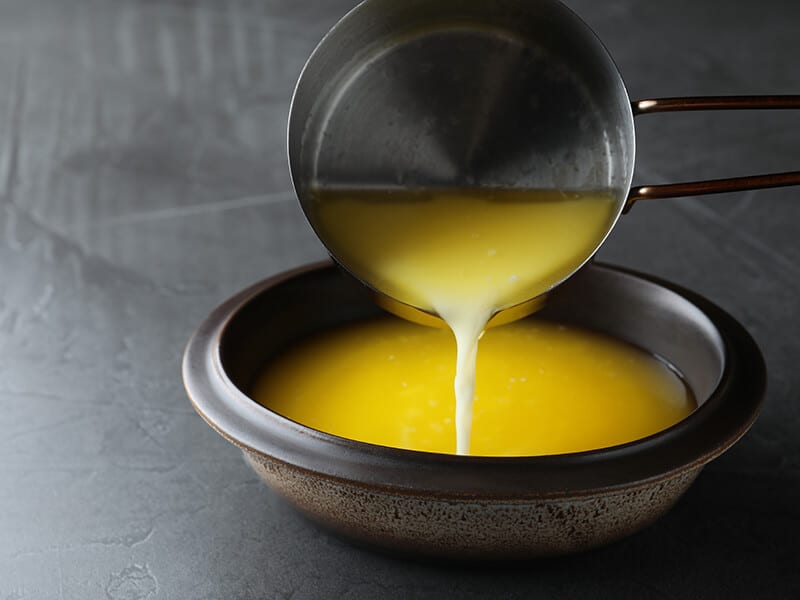
Ghee is a form of butter, so using clarified butter as a substitute for ghee is not a bad choice. However, if you are on a diet and want to lose weight, you should consider using clarified butter because of its high-fat content.
Ghee has a solid texture in the condition of a certain temperature, and clarified butter exists in a different state. The process of making clarified butter is different from ghee. It is made from the process of separating milk solids from evaporation of water and fat.
If you do not care about that, clarified butter is a wonderful choice. Clarified butter is especially suitable for deep-frying dishes. Clarified butter will help the dish be crispy and maintain the texture without affecting the flavor of the dish.
To substitute for 1 part ghee, you should use 1 part clarified butter because they are quite similar.
Follow These Instructions To Make Ghee At Home
The recipe to make ghee is not too complicated because it is just a process of heating butter. However, you need to do the steps correctly to get the best quality ghee. Let’s follow the following steps to know how to make ghee at home.
- Step 1: Choose a pan with a thick bottom, put butter in the pan.
- Step 2: Heat the butter over medium heat until it melts slowly.
- Step 3: The whey will start to rise; you have to take the whey out.
- Step 4: The milk fat begins to sink to the bottom of the pan, and the butter starts turning clear. You have got the clarified butter.
- Step 5: When you notice the milk fat turning brown and fragrant, and use a strain to filter milk solids. The product you have is ghee.
- Step 6: Put the ghee obtained in the jar and wait for the ghee to cool.
Let’s learn these directions to make ghee at home effectively to use in cooking.
Apply The Best Methods To Keep Ghee Longer
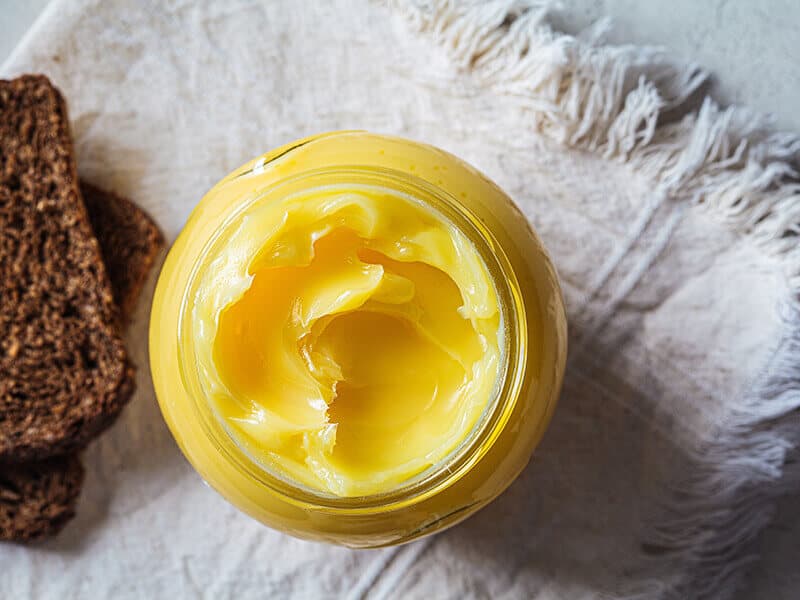
If you need to keep ghee for a long time, you need to store it correctly. There are some fantastic methods that you can apply to preserve it effectively. Keep reading carefully to learn how to store ghee perfectly.
1. Keeping Ghee In The Cabinet
Besides storing ghee in the refrigerator, you can also keep ghee longer in the cabinet. This method is straightforward to implement but also highly effective. So you can apply it to keep ghee longer in your home.
- Step 1: Pour the ghee obtained in a jar and wait until the ghee cools.
- Step 2: Close the jar tightly for better preservation.
- Step 3: Write the ghee-making date on the jar for easy tracking.
- Step 4: Put the jar in the cabinet for storage.
2. Storing Ghee Longer In The Fridge
For me, the refrigerator is always the best equipment for food preservation. Ghee stored in the refrigerator will keep longer. To keep ghee well in the refrigerator, you need to pay attention to the following instructions.
- Step 1: Pour ghee into a jar and wait for it to cool.
- Step 2: Close the jar tightly and note the making date.
- Step 3: Place the jar of ghee into the refrigerator for storage.
3. Freezing Ghee To Keep It For A Long Term
If you want to preserve ghee for the long term, you should freeze it. Freezing ghee does not take too long either. You can use ghee for a long time by following these freezing steps. I hope you will be satisfied. The shelf life of ghee is unknown when frozen at 0 degrees F.
- Step 1: Pour the ghee into a freezer bag or freezer container.
- Step 2: Close the freezer bag or container tightly to prevent invasion of dirt and bacteria.
- Step 3: Note the time of making ghee for the convenience of checking.
- Step 4: Place the freezer bag or container in the freezer for preservation.
How Long Does Ghee Last?
Keeping ghee longer or not depends on how you store ghee. Unopened ghee can last up to 2 years. The shelf life of opened ghee in the refrigerator is up to 12 months and at room temperature is 3 to 4 months.
Homemade ghee, when stored well in the refrigerator, can last up to 12 months. If you store homemade ghee in an airtight container at room temperature, it can last about 3 months.
Some Effective Tips To Tell If Ghee Has Gone Bad
Like other ingredients, ghee will spoil when it is expired, improperly stored, or attacked by mold. This section will show you the signs when the ghee has gone bad.
- When it expires, it will no longer have the characteristic milky sweetness. When tasting ghee, if you feel sour, this indicates that your ghee has gone rancid.
- Ghee will lose its smell when spoiled. You can tell this when you smell ghee. When spoiled, ghee will no longer have its characteristic smell.
- If you see white spots on the ghee’s surface, the ghee has been attacked by mold. This is the result of not closing the container tightly.
- If the quality of the ghee is no longer what it was originally, you should also throw it away. You can easily notice this through the change of taste and smell.
Exploring The Nutritional Components And Health Effects Of Ghee
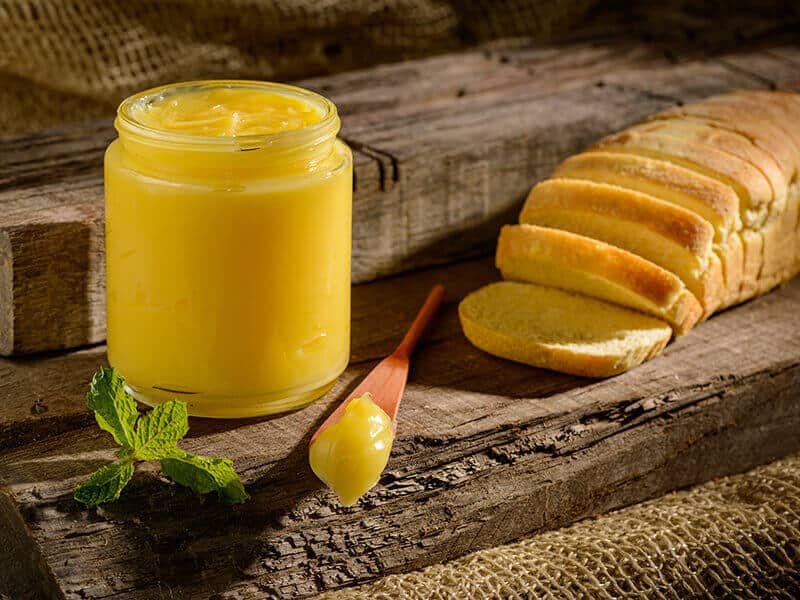
Ghee is an ingredient used in cooking, so you need to know its nutritional components to assess the effects it can bring to your health. Let’s find out this helpful information together.
1. Nutritional Components That Ghee Contains
The main nutritional components of ghee are fat and calories. It is estimated that one tablespoon of ghee contains about 15 grams of fat that include 9 grams of saturated fat. Ghee does not contain carbs, protein, and other components.
In addition, ghee also contains small amounts of vitamins, such as vitamin A (8%), vitamin E (2%), and vitamin K (1%). Ghee contains about 130 calories.
2. Discuss About The Health Benefits Of Ghee
Thanks to its nutrients, ghee will bring some fantastic health benefits to your body. To better understand the effects of ghee on health, you should focus on this section.
- Ghee helps improve your skin health. Your skin will be better healed and restored by ghee. Due to the composition of vitamins A and E, ghee will help the skin recover better when injured (1).
- Reduce the amount of acrylamide when cooking with ghee. Acrylamide is a toxic compound created during the heating of fat.
- Ghee has an effective anti-inflammatory support effect. In addition, ghee also helps fight obesity, thanks to its conjugated linoleic acid component (2).
- Ghee is a good choice for people who have GI problems by supporting the digestive process. Also, the healthy fat (CLA) in ghee will be helpful to you if you want to lose weight.
Listen to some health advantages of ghee to use ghee properly.
FAQs
There is more information related to this topic. I will help you answer frequently asked questions about substitutes of ghee so that you can get more helpful knowledge.
Which Substitute Do You Like The Most?
The variety of ingredients in cooking is extremely essential because it helps the taste of the dish become richer and more novel. The dishes, when combined with ghee are delicious, but when mixed with the substitutes that I have provided, they also bring good quality.
I hope the list of wonderful substitutes for ghee will make your cooking simpler and more convenient. You will have many options to combine according to specific purposes. Your meals will become more attractive, thanks to these substitutes.
If you are satisfied with the content of the article, please like and share the article so that more people know this helpful information. Share other substitutes you know in the comments. Thanks for reading!
References
- Anveshan. 2021. 5 Ways To Use Ghee for Skin. [online]. Available at: https://www.anveshan.farm/blogs/anveshan-blog/desi-ghee-for-skin.
- Shivananjappa, M.M., S., S., M, P., R, M., & Naik R, S. (2020). ‘Health Benefits of Ghee (Clarified Butter) – A Review From Ayurvedic Perspective’. [online]. Available at: https://www.ipinnovative.com/journal-article-file/12521.

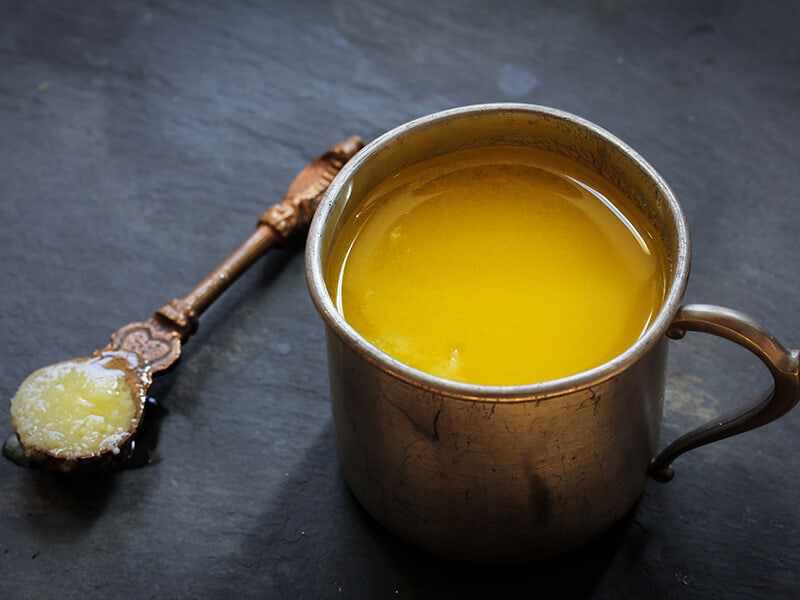
Liam O’Brien
Founder & Recipe Developer
Expertise
Education
Dublin Institute of Technology (now Technological University Dublin)
Ballymaloe Cookery School, County Cork, Ireland
Liam O’Brien is the co-founder and kitchen soul behind Good Tasting Meals, a chef who believes that cooking shouldn’t feel stressful or complicated.
He earned his culinary stripes at Technological University Dublin and polished his farm-to-table skills at Ballymaloe Cookery School. With over 15 years flipping pans and stirring up stories, Liam has worked in family cafés, bustling bistros, and everything in between.
At Good Tasting Meals, Liam brings you recipes that feel like home: cozy, simple, and full of flavor.